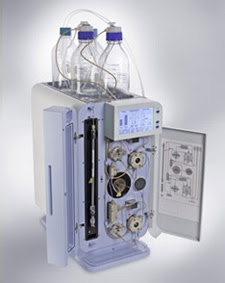 Rising to the Occasion
Rising to the Occasion
Michael Pickering
My wife Judy baked bread recently for our annual St. Patrick’s Day luncheon at Pickering Labs. She’s an excellent baker, and her Irish Soda Bread is a favorite addition to the corned beef and cabbage “traditional” fare. Soda bread uses baking soda instead of yeast as the rising agent for the dough. In addition to baking soda, her recipe also calls for flour, salt, and buttermilk. This is typical for soda bread, as the buttermilk contains the lactic acid required for the ‘rising’ reaction with the sodium bicarbonate.
Having grown up in Southern California, I have fond childhood memories of another special kind of bread – Salt-Rising Bread. This denser bread relies on the fermentation of salt-tolerant bacteria in cornmeal. The cornmeal must be freshly stone ground, and the dry ingredients also include sugar and salt. The starter is formed as scalded milk is poured over the dry ingredients, and then left to incubate for about twelve hours at 100 or so degrees. Despite its name, salt is a relatively minor ingredient in the bread.
The Van de Kamp’s bakery had a rich history which straddled my own childhood and years living in the greater Los Angeles area. Although the bakery was originally sold by the Van de Kamp family back in the 1950’s when Theodore Van de Kamp died, the Dutch windmill style bakeries and fresh salt-rising bread remained a warm memory for many of us Southern California children. When accompanying my mom to buy our bread, I was treated on more than one occasion to a free windmill toy and a cookie.
By the mid-1970’s, the Van de Kamp bakeries had stopped baking the salt-rising bread I grew up on, but by that point I had left Southern California and moved up to the Bay Area, a region where the Van de Kamp bread had been seldom offered and shortly went out of business. However, in San Francisco, sourdough bread reigned supreme and had since the California Gold Rush.
Sourdough bread also uses natural microbes as a rising agent, but the longer fermentation of the starter allows the Lactic Acid produced by the Lactobacillus to give the bread a uniquely sour taste. Naturally occurring yeasts such as Saccharomyces exigua and Saccharomyces cerevisiae also participate in the rising. Sourdough yeasts work slower than today’s packaged yeasts, increasing the time needed for fermentation to multiple days. San Francisco sourdoughs are usually kept closer to 70 degrees and often need a week to become stabilized.
Flour and water are combined in the starter, and various methods for introducing micro-organisms and stabilizing the dough are used. Often times, boiled potatoes are used to help increase the activity of the bacteria. Creating a sourdough starter is a baker’s science, and each recipe is unique and starter closely monitored. As a result, bakers are often using “mother dough” that is many years old. Some bakeries, such as the Boudin Bakery, are able to trace their “mother dough” back to the Gold Rush era.
During the 1980’s, as modern food processes and general business consolidation trended, San Francisco bakeries fell into the hardship of competition with prepackaged bread. Smaller bakeries were driven out of business, and the long-term survivors tended to be the larger bakeries with well-established distribution channels. I moved to Oregon during this time, and my observations upon returning to the Bay Area some years later made it clear that there was a stark change in the availability of good local sourdough bread. Fortunately for my family, Judy was at the peak of her baking heyday during this time and we were seldom lacking in good bread around my house!
Fast forward to now, and the artisan bread movement has brought back the ability to purchase good, hand-made loaves of bread. Specialty bakeries have been started and thrive in high numbers. Even restaurants and grocery stores are taking the time to bake their own bread. I personally continue to feel that no sourdough of modern San Francisco origin can compete to the distinct sour taste and texture of earlier days, but there is no Pickering starter dough dating back to 1970 lurking in my refrigerator, so I make do with what’s available. It is my sincere hope that the continued evolution of artisan bread, gastronomy, and the souring culture will ultimately recreate my ideal sourdough again soon.
Until then, at least we can look forward to St. Patrick’s Day each year, when Judy will rise to the occasion and bake a unique bread to treat us all again!





